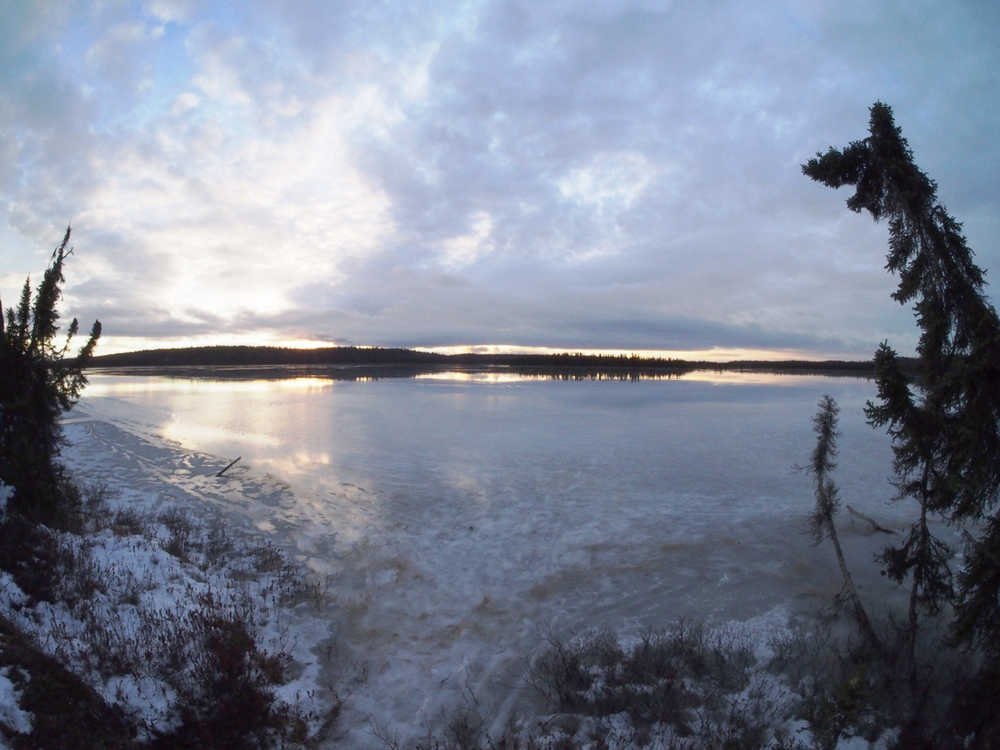Editor’s note: Due to a technical issue, the Refuge Notebook was not published in Friday’s Clarion.
Short days and little to no snow — not a pleasant combination for most Alaskans who treasure their winter outdoor recreational pursuits. A recent news story about Anchorage temperatures not dipping below zero degrees Fahrenheit in 2014 was yet another reminder, as if we needed one, that winter has been strangely absent since last December here on the Kenai National Wildlife Refuge. Snow has been among the casualties.
In addition to supporting our winter pastimes, snow and snow cover in the northern latitudes are of course transformative agents with far-reaching ecological effects.
Snow itself provides habitat for some primitive forms of life. This includes surprisingly abundant and diverse communities of algae, bacteria, fungi, diatoms, viruses, rotifers and tardigrades. Snow also accumulates debris and chemicals including plant nutrients and pollutants from the atmosphere. Some, like atmospheric nitrogen, are then released and redistributed across the landscape. For example, snow melt provides an important source of nitrogen in tundra ecosystems.
Snow plays a dual role in terms of temperature regulation. Fresh snow has a high albedo, meaning it reflects almost all solar radiation. Snow also acts as a heat sink, removing energy from the atmosphere in the form of heat. This means that the presence of snow cover inhibits soil warming until it melts, preventing biological activity that requires temperatures above freezing.
Conversely, snow is an efficient insulator, keeping temperatures in the subnivean environment (“beneath the snow”) stable at close to 32 degrees Fahrenheit. Water content, or density, is critical in determining the insulative properties of snow. Wet snow is less dense and provides less insulation. A layer of 6-8 inches of dry snow, comprised of billions of crystals separated by tiny air pockets, provides enough insulation to protect ground-level life from sub-zero ambient temperatures.
Plants covered by snow are protected from drying out in the winter and from erosion of their tissues by ice crystals. The subnivean environment is also very humid, and under thin snow packs in spring, light can penetrate and permit limited photosynthesis for some lichens and evergreen shrubs. Plants experiencing this “greenhouse effect” can begin to grow weeks before their neighbors covered by deeper snow. This combination of moisture and light beneath the snow allows for an important adaptation in a land of short growing seasons.
Warmed by radiant heat from the earth, gaps open between the snow and the ground. Many small mammals such as voles and shrews, as well as their predators like ermine, remain active throughout winter in this subnivean space. Resident birds also use subnivean spaces for protection against cold. Redpolls and chickadees often congregate beneath the snow, maintaining precious body heat. Larger birds including ptarmigan and grouse will submerge their bodies in snow to insulate themselves.
Recent discoveries have shed light on the activity of microbes — vast mats of fungi and bacteria — which thrive in soils beneath insulating layers of snow. Researchers have found that winter is a time of great microbial activity in soils that affects a very delicate balance between release of carbon dioxide through transpiration and nitrogen fixing important to plant growth and carbon storage. The timing of the snowpack — when it comes and goes — is believed critical to this balance.
Here’s hoping that 2015 brings with it a return of at least average snowfall here on the Kenai Peninsula!
From the entire Refuge staff, best wishes to all of you for a peaceful and joyful holiday season.
Andy Loranger is the Refuge Manager of the Kenai National Wildlife Refuge. You can find more information about the refuge at http://kenai.fws.gov or http://www.facebook.com/kenainationalwildliferefuge.

